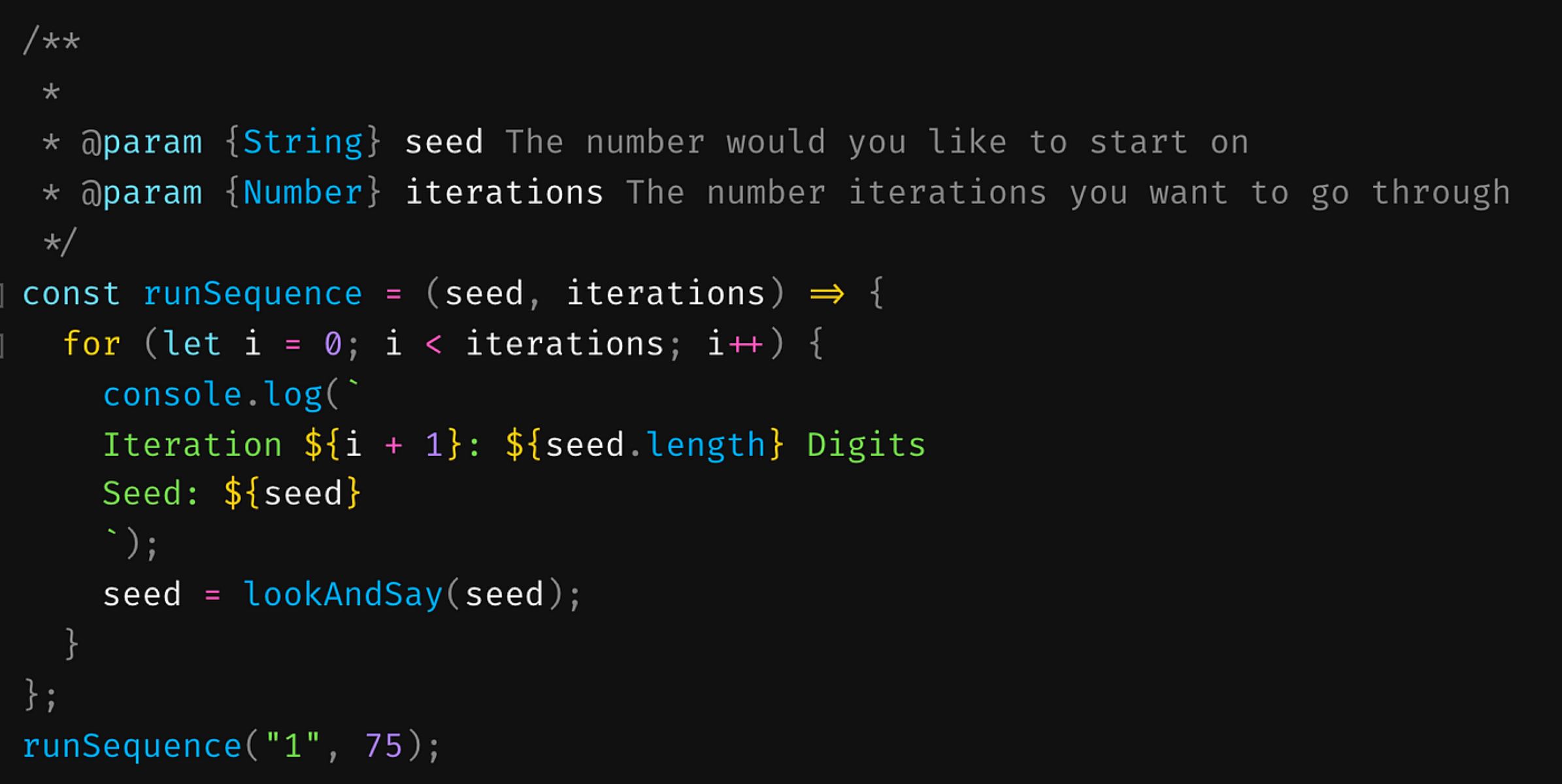Introduction
Welcome to the world of coding, where every line, character, and symbol carries meaning and power. As a beginner, it’s essential to understand the fundamental concepts that form the building blocks of coding. One such fundamental concept is sequencing.
Sequencing in coding refers to the arrangement and order in which instructions are written and executed. It involves determining the sequence of steps necessary to achieve a desired outcome or perform a task. Just as a symphony follows a carefully crafted sequence of musical notes, coding relies on a coherent sequence of instructions to achieve the desired result.
Whether you’re learning a programming language, developing software, or building a website, sequencing plays a crucial role in ensuring that the code operates as intended. Without proper sequencing, the code may not execute correctly or produce the desired output.
Why is understanding sequencing important in coding? Well, imagine you’re following a recipe to bake a cake. If you mix the ingredients in the wrong sequence or skip a step, the cake might not turn out as expected. Similarly, in coding, each line of code plays a specific role, and the order in which these lines are written determines the outcome.
Sequencing is not limited to a single instruction or line of code; it extends to the overall structure and flow of the program. It ensures that each action is executed in the correct order, allowing the code to function smoothly and efficiently.
In this article, we will delve deeper into the concept of sequencing in coding, explore its importance, understand how it is used, and provide examples that illustrate its practical application.
What is sequencing in coding?
Sequencing in coding refers to the arrangement and order in which instructions are written and executed. It involves organizing a series of steps or actions in a logical manner to achieve a specific outcome or perform a task. Just like following a recipe, sequencing in coding ensures that each line of code is executed in the correct order.
At its core, coding is about giving instructions to a computer. These instructions are written using programming languages such as Python, Java, or HTML. To create a functioning program or application, developers need to carefully determine the sequence of instructions required to achieve the desired result.
Sequencing not only determines the order in which the instructions are executed but also influences the flow and logic of the code. It ensures that each action is performed in a specific sequence, allowing the code to perform the intended tasks.
Consider a simple example of displaying a greeting message on a website. To achieve this, the code may involve multiple steps such as defining variables, assigning values, and displaying the message. Proper sequencing ensures that each step is executed in the correct order, resulting in the desired output.
Sequencing is not only limited to a linear progression of instructions. It also involves branching and looping, allowing code to make decisions and repeat actions according to specific conditions.
Without sequencing, code becomes disorganized and ineffective. It may produce errors, unexpected results, or fail to accomplish the desired outcome. Therefore, understanding and implementing proper sequencing techniques is fundamental to successful coding.
In the next section, we will explore the importance of sequencing in coding and how it impacts the functionality and reliability of a program.
Why is sequencing important in coding?
Sequencing is a fundamental concept in coding that plays a crucial role in the functionality and reliability of a program. Here are several key reasons why sequencing is important in coding:
1. Logical Execution: Sequencing ensures that instructions are executed in a logical and orderly manner. By following a specific sequence, the code can perform tasks step by step, ensuring that each action is completed before moving on to the next.
2. Desired Outcome: Proper sequencing helps achieve the desired outcome of a program. It allows developers to outline the necessary steps to accomplish a specific task or solve a problem. Without sequencing, the code may not produce the expected results.
3. Code Readability and Maintainability: Sequencing enhances the readability and maintainability of code. When instructions are organized in a logical sequence, it becomes easier for developers to understand and modify the code as needed. This is particularly important when working on collaborative projects or when troubleshooting and debugging code.
4. Error Detection: By following a sequence, it becomes easier to identify any errors or bugs in the code. When each action is executed in the correct order, it allows developers to pinpoint where issues may occur, making it easier to debug and fix problems.
5. Efficiency: Sequencing in coding ensures the efficient execution of a program. By organizing instructions in a logical order, unnecessary repetitions and redundancies can be avoided, leading to optimized code performance.
6. Scalability: When developing complex programs or applications, sequencing becomes even more critical. As the codebase expands, proper sequencing allows developers to integrate new functionalities seamlessly and maintain a structured and scalable codebase.
Overall, sequencing in coding is vital for creating programs that work as intended, are easy to understand and modify, and perform efficiently. By following a well-organized sequence of instructions, developers can ensure the success and reliability of their code.
How is sequencing used in coding?
Sequencing is a fundamental concept in coding that is used in various ways to create structured and functional programs. Here are some common use cases of sequencing in coding:
1. Instructions Execution: Sequencing is used to determine the order in which instructions are executed within a program. Each line of code is written and organized in a specific sequence to ensure that actions are performed in the desired order.
2. Program Flow: Sequencing helps define the flow and logic of a program. It allows developers to control the order in which different parts of the program are executed, based on specific conditions or user interactions.
3. Control Structures: Sequencing is crucial in implementing control structures like conditionals and loops. These structures allow the code to make decisions and repeat actions, depending on certain conditions. By properly sequencing these structures, developers can control the program’s behavior.
4. Procedural Programming: In procedural programming, sequencing is used to organize code into functions or procedures. By defining the sequence of steps within each function and the order in which functions are called, developers can create modular and reusable code.
5. Event Handling: When dealing with user interactions or event-driven programming, sequencing plays a crucial role. Proper sequencing ensures that events are handled and processed in the expected order, allowing the code to respond appropriately.
6. Data Processing: Sequencing is used when processing data or performing calculations. The order in which operations are performed can significantly impact the accuracy and efficiency of the code. By sequencing mathematical or logical operations correctly, developers can achieve the desired results.
7. Code Organization: Sequencing helps in organizing code and improving code readability. By following a logical sequence, it becomes easier to understand the flow and structure of the program. This is particularly important when working on collaborative projects or when revisiting code after a long time.
Overall, sequencing is a fundamental aspect of coding that provides structure, logic, and control to programs. By properly arranging and sequencing instructions, developers can create efficient and functional code that achieves the desired outcome.
Examples of sequencing in coding
Sequencing is an essential concept in coding that is used in various programming languages and scenarios. Here are a few examples that illustrate how sequencing is used in coding:
1. Basic Arithmetic Operations: In a simple arithmetic operation, such as adding two numbers, sequencing is crucial. For example, in Python:
num1 = 5
num2 = 3
sum = num1 + num2
The sequencing of instructions ensures that the values of `num1` and `num2` are retrieved from memory and added together before the result is stored in the variable `sum`.
2. Iterations: Sequencing is used in loops to repeat a set of instructions until a certain condition is met. In JavaScript, for example:
javascript
for (let i = 1; i <= 5; i++) {
console.log(i);
}
The sequence `i++` ensures that the variable `i` is incremented by 1 after each loop iteration, allowing the loop to iteratively print the numbers 1 to 5.
3. Conditional Statements: Sequencing is employed in conditional statements to control the flow of a program based on certain conditions. In Java, for instance:
java
int age = 25;
if (age >= 18) {
System.out.println(“You are an adult.”);
} else {
System.out.println(“You are a minor.”);
}
The sequence of instructions within the conditional statement determines whether the message “You are an adult” or “You are a minor” is printed, depending on the value of the `age` variable.
4. HTML Structure: Sequencing is used in HTML coding to structure the elements of a web page. For example:
html
Welcome to my website!
Here is some content…
The sequencing of HTML tags ensures that the elements are nested and displayed in the correct order, creating the desired structure of the web page.
These are just a few examples of how sequencing is used in coding. Whether it’s performing mathematical operations, implementing loops, or structuring HTML elements, proper sequencing is crucial for achieving the desired functionality and outcome in coding.
Tips for effective sequencing in coding
Sequencing plays a vital role in coding, ensuring that instructions are executed in the correct order to achieve the desired outcome. Here are some tips for effective sequencing in coding:
1. Plan and Outline: Before diving into writing code, take the time to plan and outline the sequence of steps required to accomplish the task. Having a clear understanding of the desired outcome and the logical flow of the program will help in organizing the code effectively.
2. Break Down Tasks: Divide complex tasks into smaller, manageable steps. Sequencing becomes more manageable when each step is clear and defined. This will improve code readability and allow for easier debugging or modification in the future.
3. Use Clear and Descriptive Names: When naming variables, functions, and classes, use descriptive names that reflect their purpose and role in the code. This makes it easier to understand the flow and purpose of the program and helps in maintaining a logical sequencing structure.
4. Follow Programming Guidelines: Different programming languages have their own guidelines and best practices. Familiarize yourself with these guidelines, including coding conventions, indentation, and comment usage. Adhering to these guidelines improves clarity and helps maintain a consistent sequencing pattern throughout the code.
5. Test and Validate: After writing the code, test it thoroughly to ensure that the sequencing produces the expected results. Validate the output at each step and verify that the code functions as intended. This helps identify any potential errors or logical flaws in the sequencing.
6. Document Your Code: Documenting your code is essential for yourself and other developers who may work on the project. Clearly explain the purpose and sequence of each section of the code through comments and documentation. This ensures that the sequencing is easily understandable and can be modified or maintained effectively.
7. Review and Refactor: Regularly review your code, looking for any opportunities to refactor or optimize the sequencing. This could involve simplifying complex sequences, removing redundancies, or restructuring code for better readability and efficiency.
8. Utilize Version Control: Version control systems, such as Git, allow you to track changes in your code and collaborate with others. Use version control to manage different versions of your codebase, making it easier to roll back changes or collaborate on sequencing improvements.
By incorporating these tips into your coding practice, you can ensure effective sequencing and create well-structured, reliable, and maintainable code.
Common challenges in sequencing and how to overcome them
While sequencing is crucial in coding, it can also pose certain challenges that developers may encounter. Here are some common challenges in sequencing and strategies to overcome them:
1. Logical Errors: One of the most common challenges is encountering logical errors in the sequencing of code. This can result in unexpected outcomes or program failures. To overcome this, it is important to thoroughly plan and review the sequencing before writing the code. Writing pseudocode or using flowcharts can help visualize the sequence and identify potential logic flaws.
2. Race Conditions: In multi-threaded or concurrent programming, race conditions can occur when multiple threads access and modify shared resources simultaneously. This can lead to unpredictable results or data corruption. To address race conditions, developers can use synchronization mechanisms, such as locks or semaphores, to control access and ensure proper sequencing of actions.
3. Dependencies: Sometimes, the sequencing of code is dependent on external resources or other parts of the program. Managing dependencies can be challenging, especially when certain actions need to be executed in a specific order. One way to overcome this challenge is to use callback functions, promises, or asynchronous programming techniques that allow for non-blocking code execution and proper sequencing of dependent actions.
4. Inefficient Sequencing: Poorly structured or inefficient sequencing can result in slower execution and reduced performance. To overcome this challenge, it is crucial to analyze the code and identify areas where optimization is possible. This may involve reordering actions, eliminating unnecessary repetitions, or utilizing more efficient algorithms to improve the overall sequencing and execution time.
5. Handling Errors and Exceptions: Error handling and exception management can be complex, especially when dealing with multiple potential errors and unexpected scenarios. To handle errors effectively, developers can implement try-catch blocks or use exception handling mechanisms provided by the programming language. Properly sequencing error handling code allows for graceful recovery or appropriate error messages.
6. Complex Control Flow: When dealing with complex control flow structures, such as nested loops and conditionals, it can be challenging to ensure the correct sequencing of actions and conditions. To overcome this, it is essential to carefully analyze the control flow and use clear indentation, comments, and logical structuring of the code. Breaking down complex sequences into smaller, manageable functions or methods can also improve readability and maintainability.
7. Debugging and Testing: Debugging and testing can become challenging when the sequencing of code is not evident or when errors are not easily reproducible. To address this, developers can utilize debugging tools provided by their coding environment, use logging statements to trace the execution path, and create comprehensive unit tests that cover different scenarios to ensure proper sequencing and identify any issues.
By being aware of these common challenges and employing the appropriate strategies, developers can overcome sequencing hurdles, create efficient code, and ensure that their programs function as intended.
Conclusion
Sequencing is a fundamental concept in coding that determines the order in which instructions are executed. It plays a crucial role in creating well-structured, functional, and efficient programs. By ensuring that code is organized and executed in the right sequence, developers can achieve the desired outcomes and streamline the flow of their applications.
In this article, we explored the definition of sequencing in coding and why it is important. We discussed how sequencing is used in various coding scenarios, such as arithmetic operations, loops, conditional statements, and HTML structure. We also provided tips for effective sequencing, including planning and outlining, breaking down tasks, following programming guidelines, and testing and validating the code.
However, it’s important to recognize that sequencing in coding is not without its challenges. Logical errors, race conditions, dependencies, inefficient sequencing, complex control flow, and debugging complexities can all pose hurdles. By being aware of these challenges and utilizing strategies to overcome them, developers can mitigate risks and create more robust and reliable code.
Ultimately, mastering sequencing is essential for any coder seeking to build high-performing and functional applications. The ability to arrange instructions in the correct order, manage dependencies, and handle complex control flow will contribute to code that is easier to read, maintain, and troubleshoot.
As you continue your coding journey, remember to pay close attention to sequencing. Embrace best practices, adhere to coding guidelines, and continuously improve your skills in planning, organizing, and executing code in the right sequence. By doing so, you’ll become a more proficient coder capable of crafting elegant and efficient solutions.

























